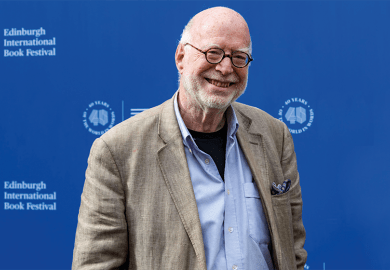Author: Rachel Potter
Edition: First
Publisher: Edinburgh University Press
Pages: 256
Price: £70.00 and £19.99
ISBN: 9780748634316 and 34323
Any book on Modernism is faced with the daunting task of providing a definition of a movement so complex and contradictory that one may feel the term is nothing more than retroactive unity imposed on a group of writers who had little in common.
This book doesn’t shy away from the contradictions or the less palatable side of the movement
A critical guide to Modernism also faces the equally difficult task of providing an overview of the disparate groups termed “Modernist” alongside the turbulent environment that influenced their writing. This textbook rises to meet these challenges admirably.
The aim of Rachel Potter’s book, part of the Edinburgh Critical Guides to Literature series, is to provide students with an introduction to Modernist writers and critical debates surrounding Modernism as a branch of study.
To do this, it is split into five chapters dealing with key issues and an introduction that sketches an overview of the movement. These five issues (Modernist networks, sex, obscenity and censorship, geography, and modern culture and politics) are further divided into subcategories in order to clearly display the way in which different writers engaged with the same topics. This ensures that the contradictory nature of the movement is never ignored or simplified; differing views are plainly displayed so that the reader understands that there was no single “Modernist response” to these large issues.
Similarly, the introduction clearly addresses concerns about the label “Modernism” while providing an explanation for the continued use of the term. The use of subcategories also demonstrates the complexity of the issues discussed while presenting them in an easy-to-read manner.
These overviews are combined with close critical analyses of passages from relevant texts, providing evidence for the way in which different authors dealt with the key issues, and furnishing the reader with a deeper understanding of texts they may not have come across before.
The diversity of the authors represented and analysed in these chapters is a definite strength of the textbook. Canonical writers such as James Joyce, Virginia Woolf and T.S. Eliot are discussed alongside Mina Loy, Katherine Mansfield and Jean Rhys; the manifestos of Vorticism and Dadaism are given as much weight as The Waste Land and Ulysses.
Easy to read without being simplistic, this book provides an interesting and diverse overview of Modernist literature that doesn’t shy away from the contradictions or the less palatable side of the movement.
As a guide, it is useful both for beginners needing an introduction to this complicated movement and for those already familiar with the subject who wish to deepen and broaden their understanding.
Who is it for?
Undergraduates studying Modernist literature.
Presentation:
Clear and easy to read.
Would you recommend it?
Yes, particularly to students interested in less canonical Modernist writers.
Register to continue
Why register?
- Registration is free and only takes a moment
- Once registered, you can read 3 articles a month
- Sign up for our newsletter
Subscribe
Or subscribe for unlimited access to:
- Unlimited access to news, views, insights & reviews
- Digital editions
- Digital access to THE’s university and college rankings analysis
Already registered or a current subscriber? Login



